1 of 24
Download to read offline
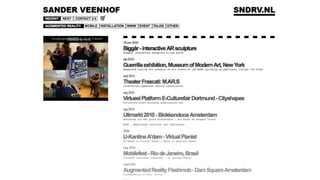
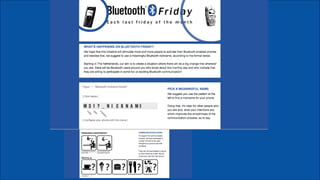

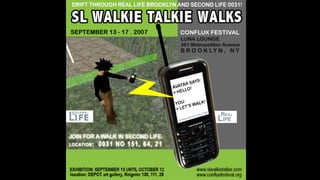



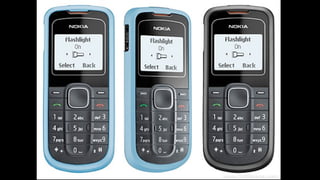
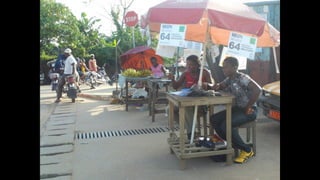

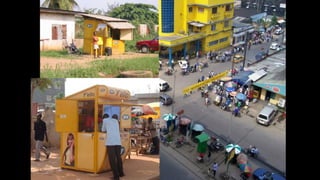

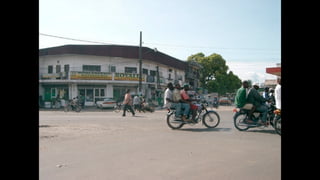
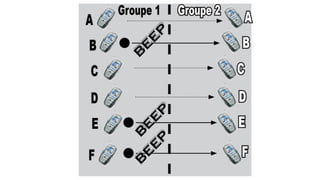

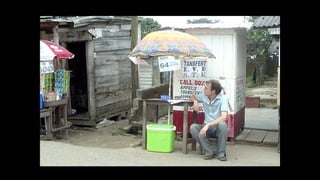
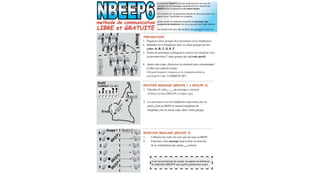
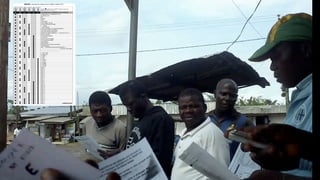


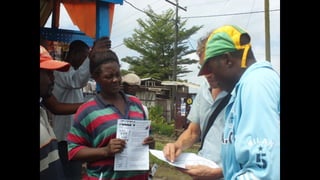


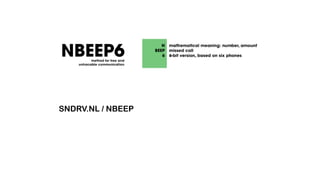
Ad
Recommended
Axel Arnbak - Privacy in the Age of Databases
Axel Arnbak - Privacy in the Age of DatabasesMobile Monday Amsterdam
╠²
The document discusses privacy concerns in an age where vast amounts of personal data are collected and stored in databases. It focuses on how smartphones generate huge amounts of data about users' physical locations, contacts, activities and habits through their sensors and uploading of usage logs. It argues that a "smart solution" is needed based on privacy by design principles that ensure transparency about how data is collected and used, anonymity of users, and user control over their own data.Robert Gaal - 3 ways to improve your data
Robert Gaal - 3 ways to improve your dataMobile Monday Amsterdam
╠²
This 3-point article provides recommendations for improving data: 1) prioritize transparency by putting the data source first, 2) outsource scaling to focus on responsibility, and 3) play with the data and allow for mistakes to drive learning. The author concludes by thanking the reader and providing contact information.Intro to nodejs
Intro to nodejsAbhinav Dhasmana
╠²
This document provides an overview of a lunch and learn session about Node.js. It will discuss why Node.js may not be suitable for some tasks, describe key Node.js concepts like the event loop and asynchronous programming, and show examples of how Node.js has already been used within MDL frameworks like Seneca and groki-server. The session aims to explain Node.js keywords and what they mean, as well as what to expect, including an overview of the event loop and how to take advantage of multiple cores.Ben Scott-Robinson - Interactive narrative and mobile
Ben Scott-Robinson - Interactive narrative and mobileMobile Monday Amsterdam
╠²
This document discusses how to tell interactive stories across mobile and physical locations by blurring the lines between real life and gameplay. It recommends using techniques like location-based interactions, augmented reality, SMS, and discomfort to draw in audiences. The key aspects of an interactive narrative are finding the core audience's interests, introducing an enticing hook, making the story feel real, providing calls to action, including villains and climactic moments, and culminating in a thrilling finale. Interactive stories can take audiences on breathless chases across real world locations.Willem Boijens - Life with Impermanence
Willem Boijens - Life with ImpermanenceMobile Monday Amsterdam
╠²
The document discusses how life has become increasingly impermanent due to advances in technology and connectivity. It explores how a trend of impermanence creates opportunities in spaces, transit, utilities, involvement and transactions. Examples of emerging technologies that enable impermanence are mentioned like location-based services that allow people to offer rides or items for transportation. The document advocates that entrepreneurs should discover and collaborate on opportunities in a world defined by constant change and impermanence.The State of Mobile Learning - Part 2
The State of Mobile Learning - Part 2Anne Bartlett-Bragg
╠²
The document discusses the impact of mobile technologies on learning, specifically the potential of mobile learning (mlearning) to disrupt traditional education methods and the importance of user experience design. It provides examples of successful mlearning initiatives and emphasizes the need for context-aware and collaborative learning environments, as well as strategic planning for implementation. The article concludes with predictions for future innovations in mobile learning, highlighting the necessity for a shift in mindset toward new pedagogical models.Raimo van der Klein - Space And What We Do With It
Raimo van der Klein - Space And What We Do With ItMobile Monday Amsterdam
╠²
1) Space can provide meaningful experiences and interactions when used actively through various verbs and relationships.
2) Augmented reality can add new interactions and meanings to physical spaces by allowing users to attach comments, polls, art, and other virtual layers.
3) This shifts spaces from passive consumption ("dream space") to more active use, potentially democratizing spaces and increasing collective understanding.Coen van Veenendaal - Alpe d'Huzes
Coen van Veenendaal - Alpe d'HuzesMobile Monday Amsterdam
╠²
This document discusses understanding life and changing the course of cancer. It references a "Cancer Roadmap" and encourages working together to blow against the wind and change its course, suggesting collective effort can alter the trajectory of cancer.Jyri Engestrom - Sharing Intentions
Jyri Engestrom - Sharing IntentionsMobile Monday Amsterdam
╠²
This talk discusses how to design social media applications that become ubiquitous platforms for sharing intentions. It is divided into three parts: 1) becoming an obligatory passage point through which information must pass, 2) designing translations between technologies and user actions, and 3) making user-generated content meaningful. The talk suggests that combining mobile touch interfaces, structured sharing of user intentions, and real-time notifications could create a new type of disruptive social application focused on simplifying, gamifying and enhancing sharing of users' plans and goals.Kevin Slavin - Reality Is Plenty, Thanks
Kevin Slavin - Reality Is Plenty, ThanksMobile Monday Amsterdam
╠²
The document appears to be a presentation given by the author in Amsterdam with no preparation. It consists of a series of brief, cryptic statements and titles that seem to reference augmenting and enhancing reality through technology like machines that fly, as well as perspectives on keeping human perception unchanged. The overall content is unclear and ranges widely in time periods referenced from the early 20th century to the present.Julian Treasure - Sound affects
Julian Treasure - Sound affectsMobile Monday Amsterdam
╠²
Physiological, psychological, and cognitive effects of sound can impact open plan office productivity. Research shows that 66% of decision making is emotional. For audio advertising, brand voices should consider gender, age, register, pitch, intonation, timbre, pace, and emotional tone to engage listeners emotionally rather than just rationally. Effective audio considers intrusion versus permission and resistance versus engagement of listeners.Tim Heineke - Shuffler.fm
Tim Heineke - Shuffler.fmMobile Monday Amsterdam
╠²
The document discusses Shuffler, an audio magazine made by music blogs that allows users to channel surf through thousands of music blogs without having to browse them individually. It aggregates content from blogs that act as DJs, filtering and curating music discoveries and adding context. Shuffler has received over 10 million visits and 100 million page views, and the document pitches the service and its ability to explore and discover new music through blog recommendations.Erwin Blom - Mobile Music
Erwin Blom - Mobile MusicMobile Monday Amsterdam
╠²
The document compares the costs of traditional music production hardware and software from the past to current lower-cost mobile app alternatives. It notes that guitar tuners, amplifiers, drum machines, synthesizers, vocal effects, recording equipment, editing suites, sequencers, DJ equipment, and full studios that previously cost hundreds or thousands can now be accessed through affordable mobile apps, making it easier than ever for people to start making music without expensive equipment.Brian Whitman - Music data is scary & beautiful & exciting
Brian Whitman - Music data is scary & beautiful & excitingMobile Monday Amsterdam
╠²
The document discusses how music data is complex, containing a variety of information like auditory spectrograms, segmentation, pitch features, timbre features, tempo spectra, and more. It also mentions how the music industry watches and makes decisions from this data, and how a 5MB song can unpack 100MB of information about itself. Developers are said to be the future of music.Yuri van Geest - Mobile Update
Yuri van Geest - Mobile UpdateMobile Monday Amsterdam
╠²
This document profiles Yuri van Geest and his work in several areas of mobile technology including neurotech, health, artificial intelligence, and more. It outlines some of his past roles and projects, including live demos of mobile neurotechnology for word recognition, translation, and visual computing. It then summarizes several of his current mobile implementation projects related to ecommerce, travel, advertising, learning, health, and media. Finally, it poses three questions about the impact of mobile technology on the brain, bodily awareness, and exponential technologies versus social cohesion.Ville Vesterinen - Shadow Cities
Ville Vesterinen - Shadow CitiesMobile Monday Amsterdam
╠²
The document introduces Shadow Cities, a new social media project by Ville Vesterinen that allows users to share experiences and memories tied to specific locations within cities. It is still in early development but aims to help new social connections form around shared places and highlight the unique character of different neighborhoods and communities. Users are invited to dream about the kind of city they would like to see.Mike Kuniavsky - Information is a Material
Mike Kuniavsky - Information is a MaterialMobile Monday Amsterdam
╠²
The document discusses information as a material for design. It notes that modern microcontrollers are inexpensive, powerful, and can automatically sense the world, act autonomously, remember, repeat tasks exactly, and communicate. This allows the creation of complex behaviors. The document then discusses using information and microcontrollers as materials for object-oriented hardware designs, smart things that interact with the physical world, and information being used for decoration, heirloom electronics, service avatars, and intelligent environments. It concludes by stating that all design involves negotiation with materials.Stefan Verkerk - iTypeFastR
Stefan Verkerk - iTypeFastRMobile Monday Amsterdam
╠²
Stefan Verkerk created an iPhone app called iTypeFastR that replaces the keyboard to make typing faster with fewer typos. It has been installed on 250k devices. He ran the app company in his spare time after his day job. The app was initially tested with a small beta crowd who provided feedback that was used to improve the product. Although the market for jailbroken iPhones is smaller, it is easier to gain attention and downloads in the jailbroken app store compared to Apple's app store. Stefan learned that he needs to adapt the app based on user reaction and ride trends like new iOS releases and jailbreaks. He also should have invested more resources to transition the app once he reached a large number ofAlper ├ćugun - The Rising Tide of Data
Alper ├ćugun - The Rising Tide of DataMobile Monday Amsterdam
╠²
The document discusses the rising tide of data being generated from various sources and how data combined with processing can produce useful and interesting insights. It notes that everything creates data, questions where the data goes, and who uses it. Commonalities across sources of data like Fitbit and social networks include their digital nature and reliance on networks to function.More Related Content
Viewers also liked (6)
Axel Arnbak - Privacy in the Age of Databases
Axel Arnbak - Privacy in the Age of DatabasesMobile Monday Amsterdam
╠²
The document discusses privacy concerns in an age where vast amounts of personal data are collected and stored in databases. It focuses on how smartphones generate huge amounts of data about users' physical locations, contacts, activities and habits through their sensors and uploading of usage logs. It argues that a "smart solution" is needed based on privacy by design principles that ensure transparency about how data is collected and used, anonymity of users, and user control over their own data.Robert Gaal - 3 ways to improve your data
Robert Gaal - 3 ways to improve your dataMobile Monday Amsterdam
╠²
This 3-point article provides recommendations for improving data: 1) prioritize transparency by putting the data source first, 2) outsource scaling to focus on responsibility, and 3) play with the data and allow for mistakes to drive learning. The author concludes by thanking the reader and providing contact information.Intro to nodejs
Intro to nodejsAbhinav Dhasmana
╠²
This document provides an overview of a lunch and learn session about Node.js. It will discuss why Node.js may not be suitable for some tasks, describe key Node.js concepts like the event loop and asynchronous programming, and show examples of how Node.js has already been used within MDL frameworks like Seneca and groki-server. The session aims to explain Node.js keywords and what they mean, as well as what to expect, including an overview of the event loop and how to take advantage of multiple cores.Ben Scott-Robinson - Interactive narrative and mobile
Ben Scott-Robinson - Interactive narrative and mobileMobile Monday Amsterdam
╠²
This document discusses how to tell interactive stories across mobile and physical locations by blurring the lines between real life and gameplay. It recommends using techniques like location-based interactions, augmented reality, SMS, and discomfort to draw in audiences. The key aspects of an interactive narrative are finding the core audience's interests, introducing an enticing hook, making the story feel real, providing calls to action, including villains and climactic moments, and culminating in a thrilling finale. Interactive stories can take audiences on breathless chases across real world locations.Willem Boijens - Life with Impermanence
Willem Boijens - Life with ImpermanenceMobile Monday Amsterdam
╠²
The document discusses how life has become increasingly impermanent due to advances in technology and connectivity. It explores how a trend of impermanence creates opportunities in spaces, transit, utilities, involvement and transactions. Examples of emerging technologies that enable impermanence are mentioned like location-based services that allow people to offer rides or items for transportation. The document advocates that entrepreneurs should discover and collaborate on opportunities in a world defined by constant change and impermanence.The State of Mobile Learning - Part 2
The State of Mobile Learning - Part 2Anne Bartlett-Bragg
╠²
The document discusses the impact of mobile technologies on learning, specifically the potential of mobile learning (mlearning) to disrupt traditional education methods and the importance of user experience design. It provides examples of successful mlearning initiatives and emphasizes the need for context-aware and collaborative learning environments, as well as strategic planning for implementation. The article concludes with predictions for future innovations in mobile learning, highlighting the necessity for a shift in mindset toward new pedagogical models.More from Mobile Monday Amsterdam (20)
Raimo van der Klein - Space And What We Do With It
Raimo van der Klein - Space And What We Do With ItMobile Monday Amsterdam
╠²
1) Space can provide meaningful experiences and interactions when used actively through various verbs and relationships.
2) Augmented reality can add new interactions and meanings to physical spaces by allowing users to attach comments, polls, art, and other virtual layers.
3) This shifts spaces from passive consumption ("dream space") to more active use, potentially democratizing spaces and increasing collective understanding.Coen van Veenendaal - Alpe d'Huzes
Coen van Veenendaal - Alpe d'HuzesMobile Monday Amsterdam
╠²
This document discusses understanding life and changing the course of cancer. It references a "Cancer Roadmap" and encourages working together to blow against the wind and change its course, suggesting collective effort can alter the trajectory of cancer.Jyri Engestrom - Sharing Intentions
Jyri Engestrom - Sharing IntentionsMobile Monday Amsterdam
╠²
This talk discusses how to design social media applications that become ubiquitous platforms for sharing intentions. It is divided into three parts: 1) becoming an obligatory passage point through which information must pass, 2) designing translations between technologies and user actions, and 3) making user-generated content meaningful. The talk suggests that combining mobile touch interfaces, structured sharing of user intentions, and real-time notifications could create a new type of disruptive social application focused on simplifying, gamifying and enhancing sharing of users' plans and goals.Kevin Slavin - Reality Is Plenty, Thanks
Kevin Slavin - Reality Is Plenty, ThanksMobile Monday Amsterdam
╠²
The document appears to be a presentation given by the author in Amsterdam with no preparation. It consists of a series of brief, cryptic statements and titles that seem to reference augmenting and enhancing reality through technology like machines that fly, as well as perspectives on keeping human perception unchanged. The overall content is unclear and ranges widely in time periods referenced from the early 20th century to the present.Julian Treasure - Sound affects
Julian Treasure - Sound affectsMobile Monday Amsterdam
╠²
Physiological, psychological, and cognitive effects of sound can impact open plan office productivity. Research shows that 66% of decision making is emotional. For audio advertising, brand voices should consider gender, age, register, pitch, intonation, timbre, pace, and emotional tone to engage listeners emotionally rather than just rationally. Effective audio considers intrusion versus permission and resistance versus engagement of listeners.Tim Heineke - Shuffler.fm
Tim Heineke - Shuffler.fmMobile Monday Amsterdam
╠²
The document discusses Shuffler, an audio magazine made by music blogs that allows users to channel surf through thousands of music blogs without having to browse them individually. It aggregates content from blogs that act as DJs, filtering and curating music discoveries and adding context. Shuffler has received over 10 million visits and 100 million page views, and the document pitches the service and its ability to explore and discover new music through blog recommendations.Erwin Blom - Mobile Music
Erwin Blom - Mobile MusicMobile Monday Amsterdam
╠²
The document compares the costs of traditional music production hardware and software from the past to current lower-cost mobile app alternatives. It notes that guitar tuners, amplifiers, drum machines, synthesizers, vocal effects, recording equipment, editing suites, sequencers, DJ equipment, and full studios that previously cost hundreds or thousands can now be accessed through affordable mobile apps, making it easier than ever for people to start making music without expensive equipment.Brian Whitman - Music data is scary & beautiful & exciting
Brian Whitman - Music data is scary & beautiful & excitingMobile Monday Amsterdam
╠²
The document discusses how music data is complex, containing a variety of information like auditory spectrograms, segmentation, pitch features, timbre features, tempo spectra, and more. It also mentions how the music industry watches and makes decisions from this data, and how a 5MB song can unpack 100MB of information about itself. Developers are said to be the future of music.Yuri van Geest - Mobile Update
Yuri van Geest - Mobile UpdateMobile Monday Amsterdam
╠²
This document profiles Yuri van Geest and his work in several areas of mobile technology including neurotech, health, artificial intelligence, and more. It outlines some of his past roles and projects, including live demos of mobile neurotechnology for word recognition, translation, and visual computing. It then summarizes several of his current mobile implementation projects related to ecommerce, travel, advertising, learning, health, and media. Finally, it poses three questions about the impact of mobile technology on the brain, bodily awareness, and exponential technologies versus social cohesion.Ville Vesterinen - Shadow Cities
Ville Vesterinen - Shadow CitiesMobile Monday Amsterdam
╠²
The document introduces Shadow Cities, a new social media project by Ville Vesterinen that allows users to share experiences and memories tied to specific locations within cities. It is still in early development but aims to help new social connections form around shared places and highlight the unique character of different neighborhoods and communities. Users are invited to dream about the kind of city they would like to see.Mike Kuniavsky - Information is a Material
Mike Kuniavsky - Information is a MaterialMobile Monday Amsterdam
╠²
The document discusses information as a material for design. It notes that modern microcontrollers are inexpensive, powerful, and can automatically sense the world, act autonomously, remember, repeat tasks exactly, and communicate. This allows the creation of complex behaviors. The document then discusses using information and microcontrollers as materials for object-oriented hardware designs, smart things that interact with the physical world, and information being used for decoration, heirloom electronics, service avatars, and intelligent environments. It concludes by stating that all design involves negotiation with materials.Stefan Verkerk - iTypeFastR
Stefan Verkerk - iTypeFastRMobile Monday Amsterdam
╠²
Stefan Verkerk created an iPhone app called iTypeFastR that replaces the keyboard to make typing faster with fewer typos. It has been installed on 250k devices. He ran the app company in his spare time after his day job. The app was initially tested with a small beta crowd who provided feedback that was used to improve the product. Although the market for jailbroken iPhones is smaller, it is easier to gain attention and downloads in the jailbroken app store compared to Apple's app store. Stefan learned that he needs to adapt the app based on user reaction and ride trends like new iOS releases and jailbreaks. He also should have invested more resources to transition the app once he reached a large number ofAlper ├ćugun - The Rising Tide of Data
Alper ├ćugun - The Rising Tide of DataMobile Monday Amsterdam
╠²
The document discusses the rising tide of data being generated from various sources and how data combined with processing can produce useful and interesting insights. It notes that everything creates data, questions where the data goes, and who uses it. Commonalities across sources of data like Fitbit and social networks include their digital nature and reliance on networks to function.Timo Arnall - The design of networked products
Timo Arnall - The design of networked productsMobile Monday Amsterdam
╠²
This document discusses Timo Arnall and his work exploring embodied interaction and unconscious gestures through technology. It provides biographical information on Arnall, links to some of his projects on Vimeo exploring concepts like using gestures to control devices, and links to his professional websites and social media profiles where more of his work can be found. The document examines both short and long term uses of embodied interaction techniques.Tom Hume - Design in the product lifecycle
Tom Hume - Design in the product lifecycleMobile Monday Amsterdam
╠²
This document discusses design in the product lifecycle from concept to launch and beyond. It outlines the stages of concept work, fleshing out designs with sketches and wires, bridging any gaps, and validating work after launch. It notes challenges like churn from overlapping design and development and understanding customer expectations. The document provides lessons on starting well to set the tone, collaborating throughout, pursuing the right design fidelity, communicating the vision strongly, and narrowing all gaps.Rick le Roy - Three design methods for mobile services
Rick le Roy - Three design methods for mobile servicesMobile Monday Amsterdam
╠²
Three design methods plus a bonus:
1. Envisioning involves imagining the context and scoping ideas to focus on the essentials.
2. Prototyping early, even with low-tech methods, helps test if ideas will work in practice.
3. A bonus method is using design patterns, which allow borrowing and recombining existing interface solutions.Lyan van Furth & Jeroen Retrae - Vuvuzela 2010
Lyan van Furth & Jeroen Retrae - Vuvuzela 2010Mobile Monday Amsterdam
╠²
The document discusses the success of the Vuvuzela 2010 app, which became the top free app on the day of its release with over 500,000 downloads. Within a week it had been downloaded over 6 million times across 89 countries, becoming the number one app overall. The app proved popular in countries like the USA, Germany, UK, Japan, and France. Banner advertisements for the app achieved high click-through rates, especially in Europe and Asia.Ad
